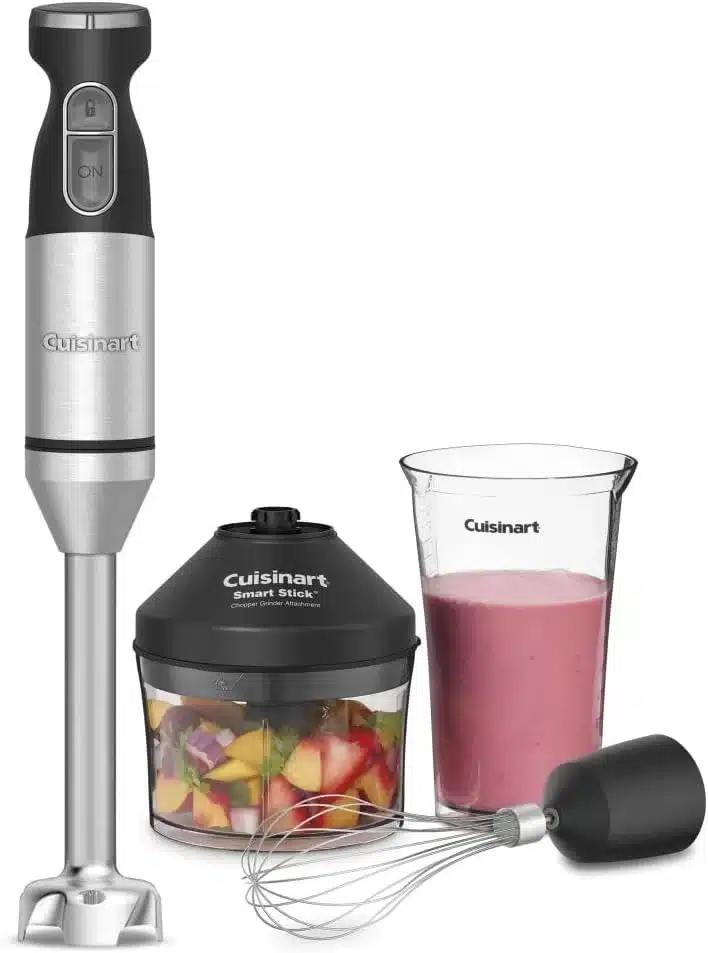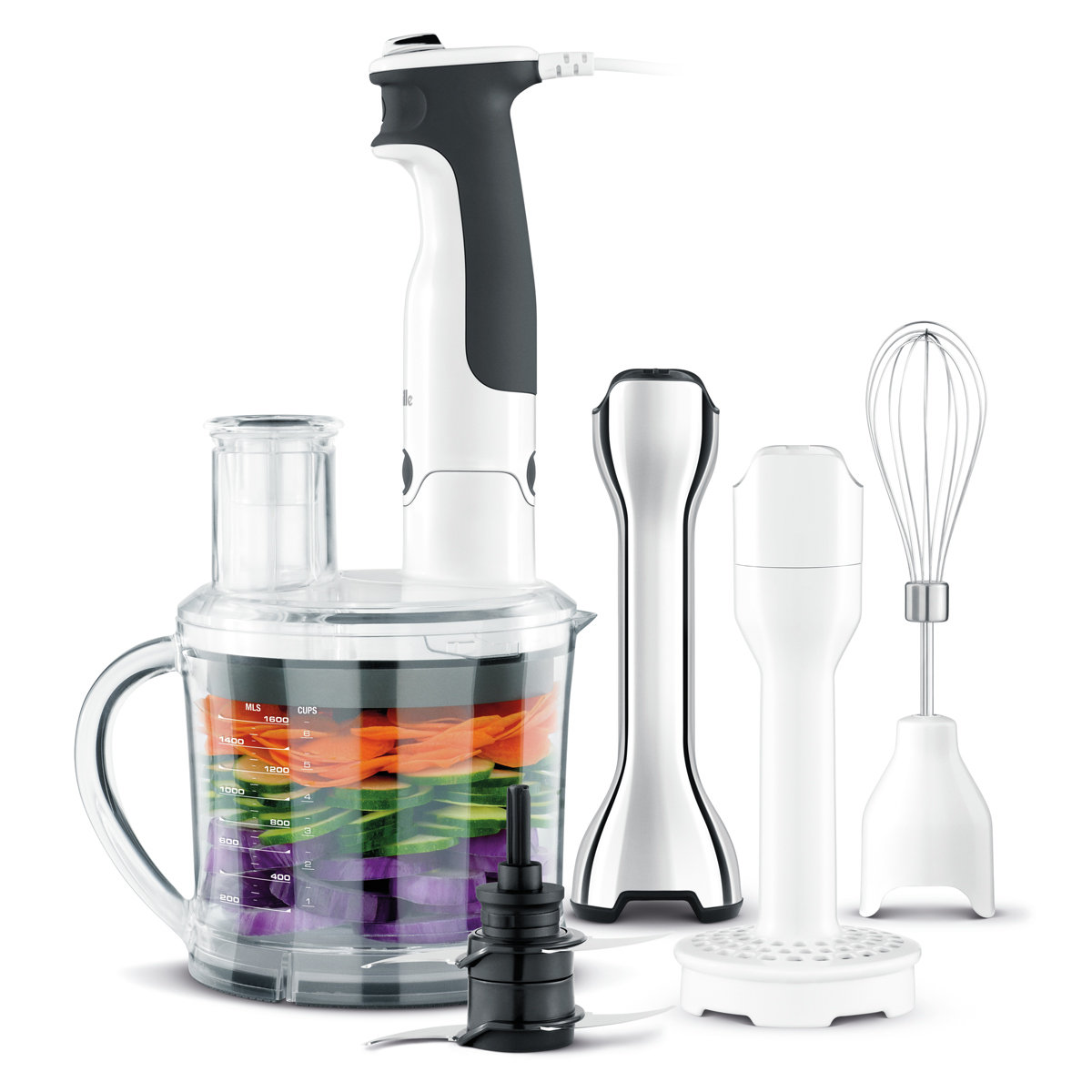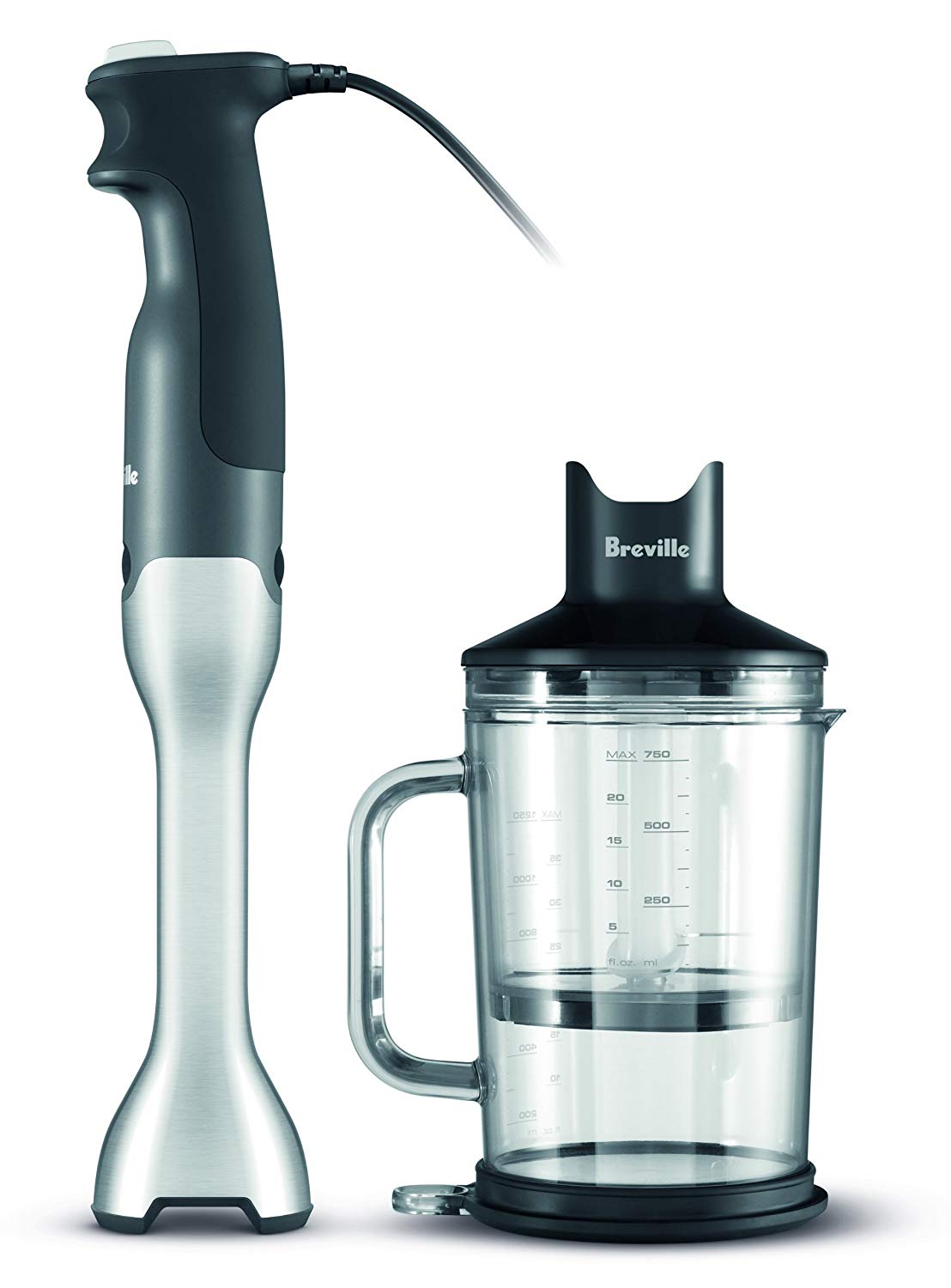
A Breville stick blender, also known as an immersion blender, is a versatile kitchen tool that can make food prep easier and faster. With its powerful motor and interchangeable attachments, a Breville stick blender can puree soups and sauces right in the pot, emulsify salad dressings in a flash, and even whip up smoothies and milkshakes.
While immersion blenders are designed to be easy to use, there are some tips and techniques to employ that can help you get the most out of your Breville stick blender. In this blog post, we’ll share some pointers on how to use a Breville immersion blender effectively to blend, puree, and mix ingredients with ease.
Breville stick blenders come with various attachments that are suitable for different blending tasks. Here are some of the common attachments and what they are best used for:
Choosing the right attachment for the task will make your blending easier and achieve the best results.
Breville stick blenders have variable speed settings, usually ranging from 1 to 15 or 1 to 20. Start on a lower speed and gradually increase to higher speeds as needed. Here are some tips on adjusting speeds:
Get a feel for your blender and ingredients to find the right speed settings for each blending task.

How you use the Breville stick blender can also impact the results. Follow these technique tips:
With some practice, you’ll be able to blend ingredients to the perfect texture and consistency.
To keep your Breville stick blender performing at its best, proper cleaning and maintenance is essential:
With the proper care, your Breville stick blender will deliver fast, efficient blending for years.

From soups and sauces to baby food and protein shakes, a stick blender like the Breville makes quick work of many kitchen tasks. Here are some recipe ideas to try:
Smooth soups – Purée cooked soups directly in the pot for silky, smooth texture. Try tomato, cauliflower, and butternut squash soups.
Salad dressings and sauces – Make emulsified dressings and sauces like ranch, vinaigrette, pesto, chimichurri, and mayo.
Baby food – Steam and purée fruits, vegetables, and meats into healthy homemade baby food.
Protein shakes – Blend protein powder, milk, frozen fruit, yogurt, and more for nutrient-packed smoothies.
Milkshakes – Mix ice cream, milk, and flavors like chocolate, strawberry, peanut butter-banana.
Fruit purees – Puree fresh or frozen fruit into syrups for pancakes, smoothies, cocktails, and more.
With an arsenal of attachments, durable blades, and adjustable speeds, a Breville stick blender makes easy work of food prep. Follow these tips and techniques and you’ll be able to blend, mix, and puree with ease.

What can’t a stick blender do?
A stick blender excels at blending and pureeing liquids and soft foods. However, it lacks the power to knead heavy dough or grind hard foods like meat. For those tasks, a stand mixer or food processor is better equipped.
How do I prevent food getting stuck in the crevices?
Regular cleaning and checking for stuck-on bits of food is key. Soaking in hot, soapy water can help loosen food particles. Use a damp cloth or small brush to dislodge anything stuck in crevices.
Should ingredients be hot or cold when blending?
Room temperature or slightly warm ingredients are best. Blending extremely hot liquids can cause splattering and overflow. Very cold ingredients like ice can jam the blades. Allow hot foods to cool down or chill icy foods briefly before blending.
From velvety soups to healthy smoothies and dips, a Breville stick blender is designed to tackle a wide range of blending tasks with its interchangeable attachments and adjustable speeds. Follow the tips in this post to choose the right settings, employ proper technique, clean and maintain the blender, and enjoy consistent results. With some practice, you’ll be able to effortlessly blend up feast-worthy fare.
